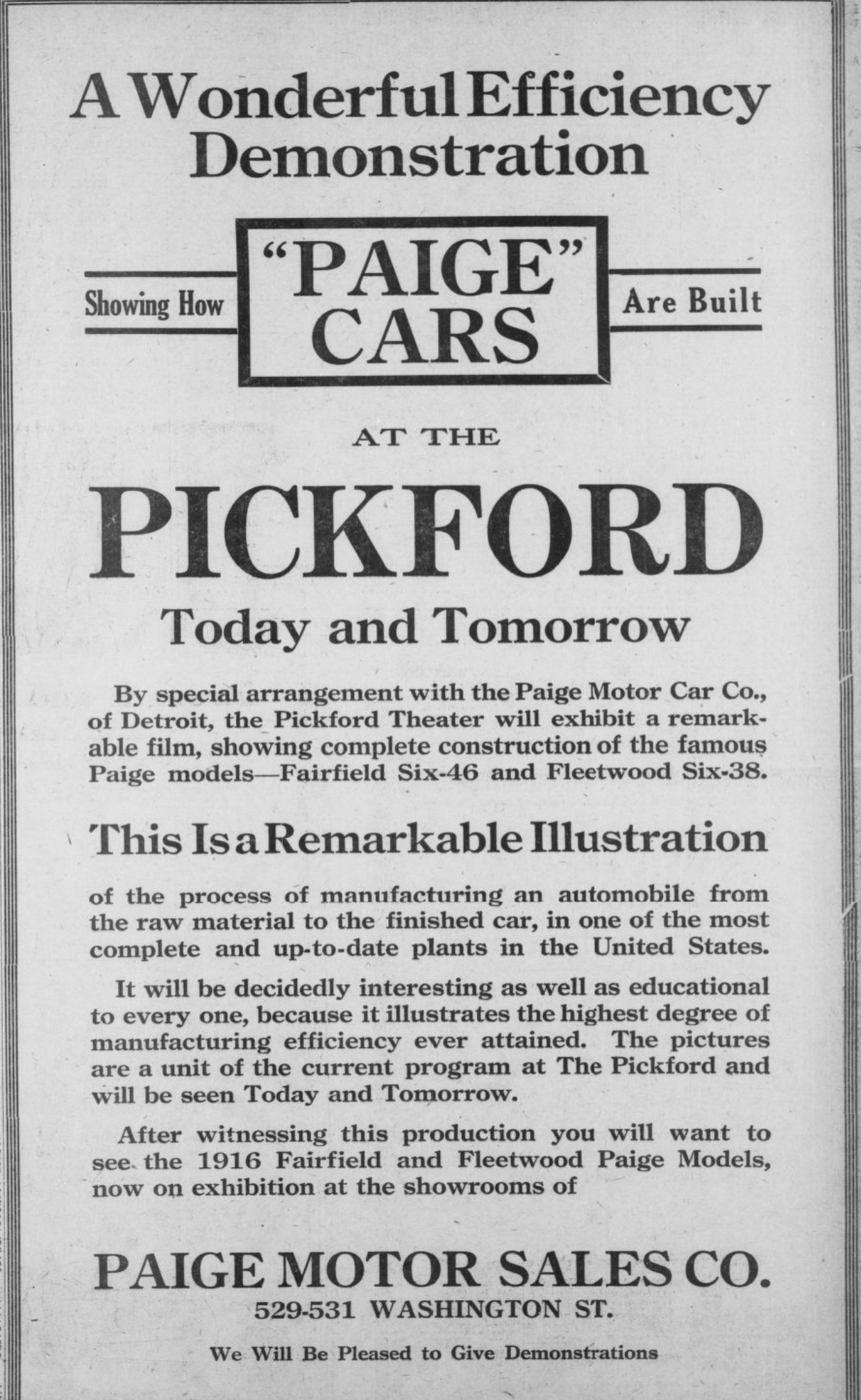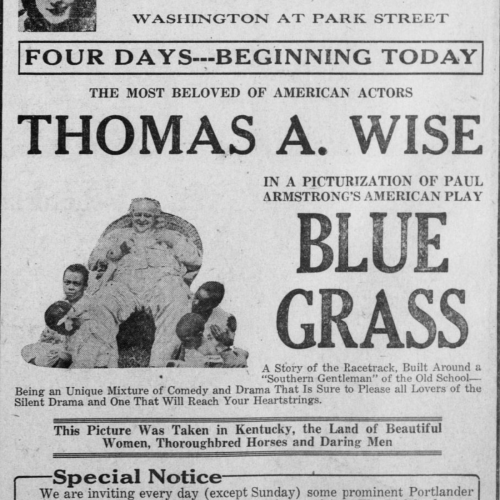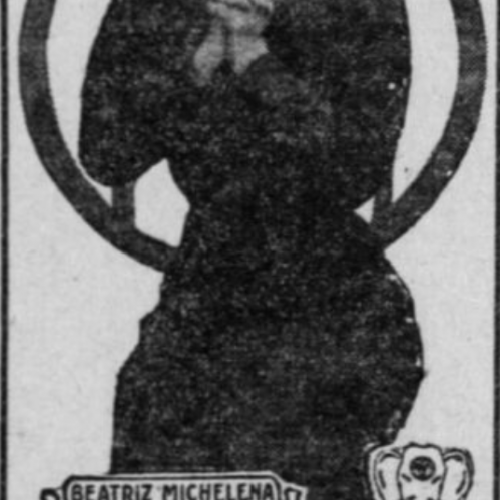The People’s Amusement Company was a well-established and the largest motion picture exhibiting enterprise in Oregon during the early film era. This company was responsible for opening the Pickford Theater on October 30th, 1915, or rather, renaming the former Star Theater located at Park and Washington in Portland, Oregon. The theater was operated by the People’s Amusement Company and was intended to “show Paramount and Equitable service, offering first-run pictures exclusively.” The Pickford theater has a fairly unique name when it comes to the exhibition scene, though it may be clear to fans of the silent era, the title is an attempt to honor the star through showing pictures at this locale.1 Once a number of renovations and improvements were made to the former Star theater, including an increased seating capacity of 1,000, a marble trimmed lobby and a marquis front, the Pickford opened for business.

Advertisements for the Pickford were often informative and attention-grabbing. Frequently in the advertisements they were large and took up much of the page it was on, which likely was an expensive venture at this time. Ads typically were intended on establishing the showtimes for pictures being played at the theater and often included images to go along with the ad or were stills from the film itself. As one may assume, they detailed the length of the film and how long it would be present at the Pickford if it was a limited run film (one included a note that told a film it would only be run for 4 days)2. Also mentioned was the background of a film’s creation as well as the main filmmakers or talent associated with the film, such as director or actor, often this can be seen as another way to draw readers to a theater. This also could be seen as a reflection of the Pickford’s desire to direct attention to the stars of the film, as their name was also an occasion of such an attempt to honor3.
In addition to the many ads seen in the papers around this time in Portland, there were also notes marked with "special notice" at the bottom of ad spaces. In these notes, it tells that the theater intends to conduct daily sweepstakes that which a single Portland citizen will be awarded a "loge party" for themselves and 7 friends. This party would be hosted by the Pickford and could be attained by simply presenting proof of identification to the box office4. Though it is unclear how a winner is decided, the Pickford seemingly selects a previous or potentially frequent guest of the theater and names them in the paper and then invites them to a showtime later in the week. Promotion such as this was likely a unique and effective way of attaining new guests or maintaining constant business as movie-goers even today can agree, everyone wants to see a movie if it is free.
However, it was not simply entertainment films that were shown at the theater.
One article/advertisement that can be found in the Sunday Oregonian’s issue on March 5, 1916, mentions that a sort of educational film was to be shown by sponsor of the Paige Motor Car Company of Detroit, Michigan. With there being a showroom nearby the Pickford theater, one may find it ironic that the film on display at the theater was to display the fashion in which the cars at Paige were manufactured. In the film, one would have been able to see the complete manufacture of both the Fairfield and Fleetwood models of the Paige Cars. The end-goal of the ad is clear as it mentions the desire one would have to purchase one of these vehicles after seeing the “highest degree of efficiency” at one of the most “up-to-date plants in the United States.” The ad lastly details the film would be a part of the program at the Pickford theater for two days, leading one to draw on this as an idea of the diversity and variety of the bill that would be seen at the theater that is so acclaimed as to have such support from the Paige Motor Car Company5.

The Pickford theater met it's early "demise" as a result of a name contest on Dec 9, 1916. As trivial as it may sound, this came at the response of the Artcraft releases associated with the star and the studios associated with her were being moved to another theater6. The Pickford was planning on offering a cash prize to the winner who selected the new name, though one is never directly mentioned to have won the contest. Further clarified by another article, it confirms the official renaming of the theater back to the original name that many knew it as before it was referred to as the Pickford. According to the article, a total of 3.478 names were suggested by visitors of the theaters owned by the People's Amusement Company7



